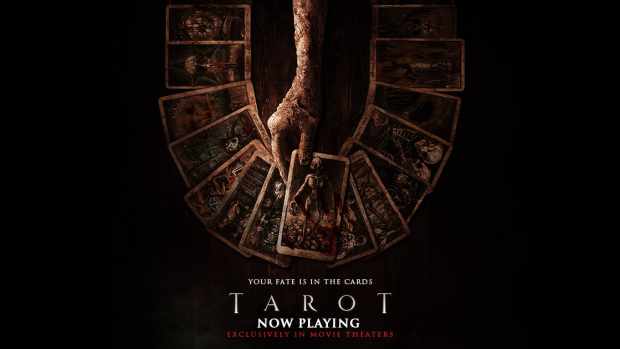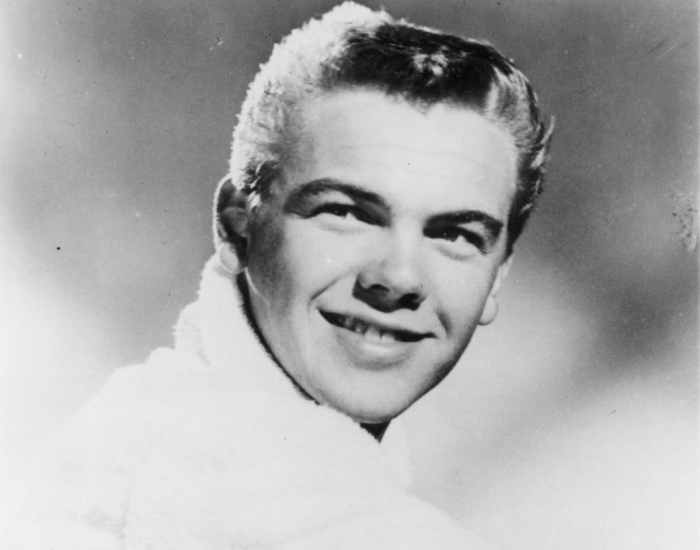Whatever Happened to Bobby Driscoll?
A Promising Beginning
Bobby Driscoll was just five years old when he began his acting career. The only son of a salesman and a former schoolteacher, he simply went in for a haircut one day and ended up meeting an agent.
In a radio interview in 1946, Driscoll revealed, "A barber in Pasadena told me I should be in the movies, so one Sunday he invited us out to his home and his son was there. We found out his son was in the movies, and his son got me an appointment with his agent. His agent took me out to a part."
Driscoll made his debut with a small, uncredited role in the film Lost Angel (1943), starring Margaret O'Brien. From there he appeared in gradually bigger roles, eventually playing the son of actors Myrna Loy and Don Ameche in the comedy-drama So Goes My Love (1946). He got along well with his co-stars, who had positive things to say about him.
"He's got a great talent," Ameche said of Driscoll. "I've worked with a lot of child players in my time, but none of them bore the promise that seems inherent in young Driscoll."
Song of the South (1946)
Driscoll's big break came when he was nine. He landed a starring role in the Disney film Song of the South (1946), a musical that combined live action with animation. He played Johnny, a boy who visits his grandfather's Southern plantation during the Southern Reconstruction Era.
Upon its release, Song of the South was publicly denounced by the National Association for the Advancement of Colored People (NAACP), among other organizations, for its use of racial stereotypes and whitewashed portrayal of slavery. Nonetheless, it put Driscoll on the map, and he became the first actor to sign a contract with Walt Disney Productions.
Walt Disney himself made his affection for Driscoll clear as he continued casting him in musical films that combined animation with live-action, such as Melody Time (1948) and So Dear to My Heart (1948). Driscoll's mother Isabelle was quoted as saying, “He was so well supervised by Disney. People weren’t even allowed to use a swear word in front of him.”
In his biography of Disney, author Marc Eliot wrote, "What Disney saw in Driscoll was the perfect, wholesome, all-American kid... Walt often referred to Driscoll with great affection as the living embodiment of his own youth."
The Academy Juvenile Award
Though Driscoll was making a name for himself with Disney Productions, RKO Pictures borrowed him for a much different kind of film: The Window (1949), a suspense thriller in which he played a witness to a murder.
Driscoll's dramatic performance was well recieved by critics. One New York Times article read, "The striking force and terrifying impact of this RKO melodrama is chiefly due to Bobby's brilliant acting... Indeed, there is such an acute expression of peril etched on the boy's face and reflected by his every movement as he flees death... that one experiences an overwhelming anxiety for his safety."
The following year, Driscoll was presented the Academy Juvenile Award at the 22nd Academy Awards ceremony. This award, also known as the Juvenile Oscar, was a Special Honorary Academy Award bestowed by the Board of Governors of the Academy of Motion Picture Arts and Sciences (AMPAS) to performers under the age of eighteen.
Driscoll said in his acceptance speech, "I want to thank everybody that had to do with me getting this award, and I want to thank God for giving me such a wonderful mother and father. Thank you."
Recommended
Treasure Island (1950)
Driscoll's next major role was in Disney's first fully live-action film, Treasure Island (1950), an adaptation of the novel by Robert Louis Stevenson. Driscoll played the protagonist Jim Hawkins, a boy who encounters pirates in his quest to find buried treasure.
Some critics felt Driscoll was out of place as the only American in a mostly English cast. However, one review in The New York Times described Driscoll's casting as "sheer inspiration" and said he "appears to give from his heart all the apprehension and satisfaction that comes from facing danger and meeting it squarely. He is Jim Hawkins."
The following year, Driscoll reprised his role for a 60-minute radio adaptation of the film, broadcast by Lux Radio Theater.
Peter Pan (1953)
At sixteen, Driscoll voiced the title character for Disney's fourteenth animated feature film, Peter Pan (1953), based on the play and novel by J.M. Barrie. In taking this role, Driscoll became the first male actor for Peter Pan, as the character was only played by women prior to his casting. Actress Nina Boucicault originated the role on stage in 1904, and Betty Bronson starred in the first film adaptation in 1924.
Driscoll also served as a live-action model for the animators to base the character's design on. He performed on an empty sound stage alongside Kathryn Beaumont, voice actress and live model for the character Wendy. Their movements were choreographed by dancer Roland Dupree and filmed for use by the animators.
Peter Pan was released in February of 1953 to positive reviews. It became the highest-grossing film of the year. That December, it was adapted into an hour-long episode of Lux Radio Theater, with Driscoll reprising his role. The film has since been re-released in theaters eight times, most recently in 2001.
Rejection By Disney Productions
Unfortunately, as is the case with many child actors, Driscoll was deemed unmarketable once he grew up. He developed acne, as teenagers do, and had to be caked with heavy makeup whenever he appeared on screen. This is believed to have been a contributing factor in his contract with Disney Productions being terminated three years early, just weeks after the release of Peter Pan.
Not only that, industrialist Howard Hughes had bought RKO Pictures, the company that distributed Disney Studios films. Hughes had a particular disdain for child actors and didn't want any on the payroll.
Driscoll didn't find out about the termination until he showed up for work and was refused entry into the studio. He tried to sign on with other studios but wasn't taken seriously due to his reputation as Disney's child star.
"He was devastated," said Driscoll's friend, fellow child actor Billy Gray. "He was treated so rudely by Hollywood. And he didn’t take the news well." Driscoll himself was later quoted as saying, "I was carried on a silver platter and then dumped into the garbage can."
Soon his parents pulled him out of Hollywood Professional School and enrolled him in a regular public high school, where he became a target for bullies.
"The other kids didn't accept me," Driscoll later said in an interview. "They treated me as one apart. I tried desperately to be one of the gang. When they rejected me, I fought back, became belligerent and cocky and was afraid all the time."
Though he eventually convinced his parents to re-enroll him in Hollywood Professional School, and graduated in 1955, the damage had already been done. Driscoll had turned to drugs.
Addiction
For a time, Driscoll tried to market himself as Robert Driscoll to distance himself from his past as a child star. Though he landed parts in various television shows, he was never able to achieve the same success he'd once had. Whatever money he earned, he spent on drugs.
"Drugs changed him," his mother Isabelle said. "That’s when he became belligerent. Then he didn’t care about his appearance or cleanliness, he didn’t bathe, his teeth got loose. He had an extremely high I.Q., but the narcotics affected his brain."
Driscoll went on to have an extensive criminal record, including battery, burglary, and drug possession. In 1961, he was arrested three times: for robbing an animal clinic, using a fake check, and possession of opioids.
"I had everything," Driscoll said to a California judge following his last arrest. "I was earning more than $50,000 a year, working steadily with good parts. Then I started putting all my spare time in my arm. I'm not really sure why I started using narcotics. I was seventeen when I first experimented with the stuff. In no time at all I was using whatever was available, mostly heroin, because I had the money to pay for it."
Driscoll spent a year at the Narcotic Rehabilitation Center of the California Institution for Men, and emerged with fresh determination to revive his career. He moved to New York City to try his luck on Broadway and even found some success as a visual artist. Unfortunately, he lost touch with his family during this time.
"He didn’t want anyone’s help," said Isabelle. "He wanted to straighten himself out."
Death
In March of 1968, two young children found a dead body while playing in an abandoned Greenwich Village tenement in New York City. The man lay on a cot surrounded by empty beer bottles and religious pamphlets. His cause of death seemed to be heart failure caused by hardening of the arteries, a common side effect of heroin addiction.
Postmortem fingerprints were taken, but no positive identification could be made. When no one claimed him after two weeks, the man was buried in an unmarked grave on the Bronx's Hart Island alongside other unidentified bodies.
The following year, Driscoll's father became gravely ill, which made him desperate to see the son he hadn't heard from in ages. Driscoll's mother contacted the FBI and placed advertisements about his disappearance in New York newspapers. Finally, a fingerprint match confirmed that the body found in Greenwich Village was that of Bobby Driscoll. He was thirty-one years old.
It's unknown exactly where on Hart Island he was buried, as the burial records were destroyed in a fire. His death wasn't made public until 1972, when Song of the South was re-released in theaters.
"He really was a sweet guy," Billy Gray has said. "A lovely guy, a dear friend. He was responsible for one of the real high points of my life. That’s how I remember him."









